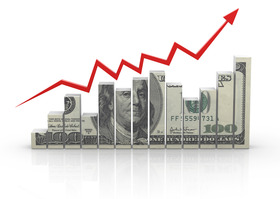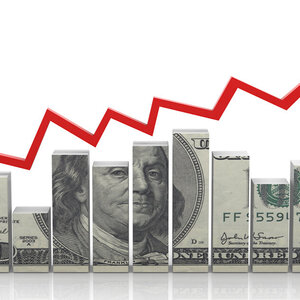The WPJ
THE WORLD PROPERTY JOURNALReal Estate Facts Not Fiction
Residential Real Estate News

U.S. Home Sales Slow in September, Yet Enjoy Biggest Median Price Increase Since 2005
Residential News » North America Residential News Edition | By Michael Gerrity | October 19, 2012 10:29 AM ET
 According to the National Association of Realtors (NAR), September existing-home sales declined modestly, but inventory continued to tighten and the national median home price recorded its seventh back-to-back monthly increase from a year earlier.
According to the National Association of Realtors (NAR), September existing-home sales declined modestly, but inventory continued to tighten and the national median home price recorded its seventh back-to-back monthly increase from a year earlier.Total existing-home sales, which are completed transactions that include single-family homes, townhomes, condominiums and co-ops, fell 1.7 percent to a seasonally adjusted annual rate of 4.75 million in September from an upwardly revised 4.83 million in August, but are 11.0 percent above the 4.28 million-unit pace in September 2011.
Lawrence Yun, NAR chief economist, said the market trend is up. "Despite occasional month-to-month setbacks, we're experiencing a genuine recovery," he said. "More people are attempting to buy homes than are able to qualify for mortgages, and recent price increases are not deterring buyer interest. Rather, inventory shortages are limiting sales, notably in parts of the West."
According to Freddie Mac, the national average commitment rate for a 30-year, conventional, fixed-rate mortgage fell to a record low 3.47 percent in September from 3.60 percent in August; the rate was 4.11 percent in September 2011.
The national median existing-home price for all housing types was $183,900 in September, up 11.3 percent from a year ago. The last time there were seven consecutive monthly year-over-year increases was from November 2005 to May 2006.
Distressed homes - foreclosures and short sales sold at deep discounts - accounted for 24 percent of September sales (13 percent were foreclosures and 11 percent were short sales), up from 22 percent in August; they were 30 percent in September 2011. Foreclosures sold for an average discount of 21 percent below market value in August, while short sales were discounted 13 percent.
Total housing inventory at the end September fell 3.3 percent to 2.32 million existing homes available for sale, which represents a 5.9-month supply4 at the current sales pace, down from a 6.0-month supply in August. Listed inventory is 20.0 percent below a year ago when there was an 8.1-month supply.
"The shrinkage in housing supply is supporting ongoing price growth, a pattern that could accelerate unless home builders robustly ramp up production," Yun said.
The median time on market was 70 days in September, unchanged from August, but down 30.7 percent from 101 days in September 2011. Thirty-two percent of homes sold in September were on the market for less than a month, while 19 percent were on the market for six months or longer.
NAR President Moe Veissi, broker-owner of Veissi & Associates Inc., in Miami, said some buyers who could easily afford a mortgage can't assume they'll get one. "Home buyers need to be more focused on the mortgage process in the current environment where lenders and banking regulators are being risk averse," he said. "Shopping for competitive mortgage terms is a good idea, but it may be more important to find a bank that is willing to work with you given your credit history. Realtors® can often recommend lenders that may have more reasonable underwriting standards."
First-time buyers accounted for 32 percent of purchasers in September, compared with 31 percent in August; they were 32 percent in September 2011.
All-cash sales were at 28 percent of transactions in September, up from 27 percent in August; they were 30 percent in September 2011. Investors, who account for most cash sales, purchased 18 percent of homes in September, unchanged from August; they were 19 percent in September 2011.
Single-family home sales declined 1.9 percent to a seasonally adjusted annual rate of 4.21 million in September from 4.29 million in August, but are 10.8 percent higher than the 3.80 million-unit level in September 2011. The median existing single-family home price was $184,300 in September, up 11.4 percent from a year ago.
Existing condominium and co-op sales were unchanged at a seasonally adjusted annual rate of 540,000 in September, but are 12.5 percent above the 480,000-unit pace a year ago. The median existing condo price was $181,000 in September, which is 10.0 percent higher than September 2011.
Regionally, existing-home sales in the Northeast fell 6.3 percent to an annual level of 590,000 in September but are 7.3 percent above September 2011. The median price in the Northeast was $238,700, up 4.1 percent from a year ago.
Existing-home sales in the Midwest slipped 0.9 percent in September to a pace of 1.10 million but are 19.6 percent higher than a year ago. The median price in the Midwest was $145,200, up 7.0 percent from September 2011.
In the South, existing-home sales increased 0.5 percent to an annual level of 1.93 million in September and are 14.2 percent above September 2011. The median price in the region was $163,600, up 13.1 percent from a year ago.
Existing-home sales in the West fell 3.4 percent to an annual pace of 1.13 million in September but are 0.9 percent above a year ago. With continuing inventory shortages in the region, the median price in the West was $246,300, which is 18.4 percent higher than September 2011.
Sign Up Free | The WPJ Weekly Newsletter
Relevant real estate news.
Actionable market intelligence.
Right to your inbox every week.
Real Estate Listings Showcase
Related News Stories
Residential Real Estate Headlines
- More Americans Opting for Renting Over Homeownership in 2024
- BLOCKTITLE Global Property Tokenization Platform Announced
- Small Investors Quietly Reshaping the U.S. Housing Market in Late 2024
- Greater Miami Overall Residential Sales Dip 9 Percent in November
- U.S. Home Sales Enjoy Largest Annual Increase in 3 Years Post Presidential Election
- U.S. Housing Industry Reacts to the Federal Reserve's Late 2024 Rate Cut
- U.S. Home Builders Express Optimism for 2025
- Older Americans More Likely to Buy Disaster-Prone Homes
- NAR's 10 Top U.S. Housing Markets for 2025 Revealed
- U.S. Mortgage Delinquencies Continue to Rise in September
- U.S. Mortgage Rates Tick Down in Early December
- Post Trump Election, U.S. Homebuyer Sentiment Hits 3-Year High in November
- Global Listings Aims to Become the Future 'Amazon of Real Estate' Shopping Platform
- Greater Las Vegas Home Sales Jump 15 Percent in November
- Ultra Luxury Home Sales Globally Experience Slowdown in Q3
- World Property Exchange Announces Development Plan
- Hong Kong Housing Market to Reach Equilibrium in Late 2025
- Construction Job Openings in U.S. Down 40 Percent Annually in October
- U.S. Mortgage Applications Increase in Late October
- World Property Markets, World Property Media to Commence Industry Joint-Venture Funding Rounds in 2025
- New Home Sales Hit 2 Year Low in America
- U.S. Pending Home Sales Increase for Third Consecutive Month in October
- Pandemic-led Residential Rent Boom is Now Fizzling in the U.S.
- Emerging Global Real Estate Streamer WPC TV Expands Video Programming Lineup
- 1 in 5 Renters in America Entire Paycheck Used to Pay Monthly Rent in 2024
- U.S. Home Sales Jump 3.4 Percent in October
- Home Buyers Negotiation Power Grows Amid Cooling U.S. Market
- Canadian Home Sales Surge in October, Reaching a Two-Year High
- Greater Orlando Area Home Sales Continue to Slide in October
- U.S. Mortgage Credit Availability Increased in October
- U.S. Mortgage Rates Remain Stubbornly High Post Election, Rate Cuts
- Construction Input Prices Continue to Rise in October
- BETTER MLS: A New Agent and Broker Owned National Listings Platform Announced
- Home Prices Rise in 87 Percent of U.S. Metros in Q3
- Caribbean Islands Enjoying a New Era of Luxury Property Developments
- The World's First 'Global Listings Service' Announced
- Agent Commission Rates Continue to Slip Post NAR Settlement
- Market Share of First Time Home Buyers Hit Historic Low in U.S.
- Greater Palm Beach Area Residential Sales Drop 20 Percent Annually in September
- Mortgage Applications in U.S. Dip in Late October
Reader Poll
Marketplace Links
This website uses cookies to improve user experience. By using our website you consent in accordance with our Cookie Policy. Read More





